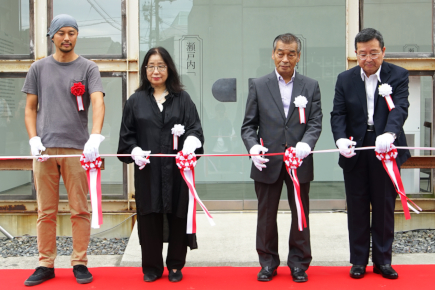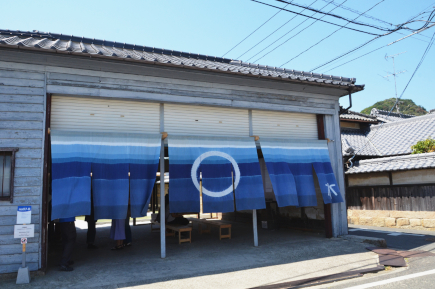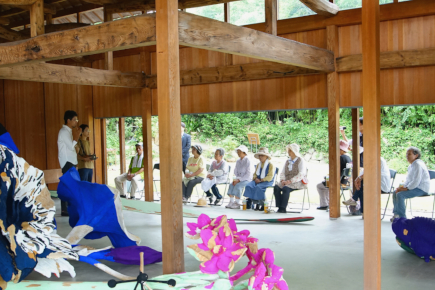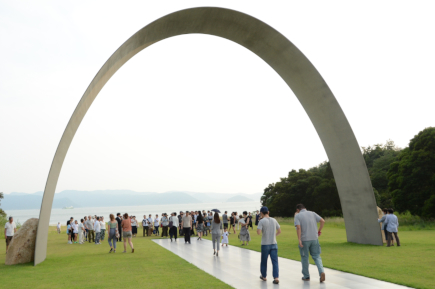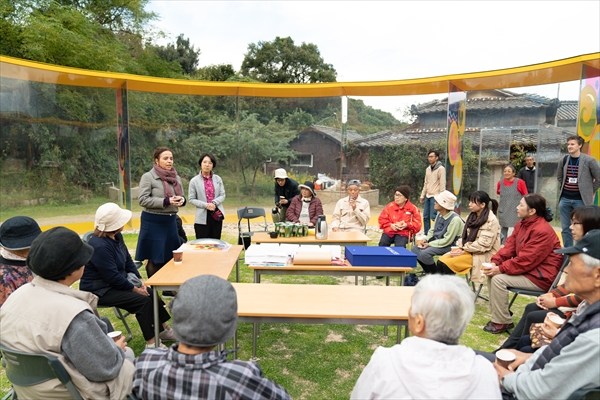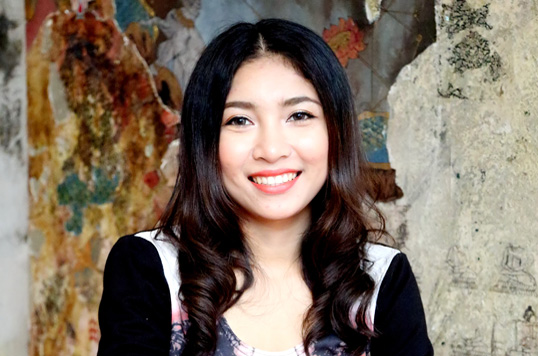Olafur Eliasson
Self-loop at Inujima Art House Project
On September 18th, 2016, prior to the beginning of the Setouchi Triennale autumn season, Olafur Eliasson's artwork Self-loop was unveiled to the public inside I-Art House at Inujima Art House Project.
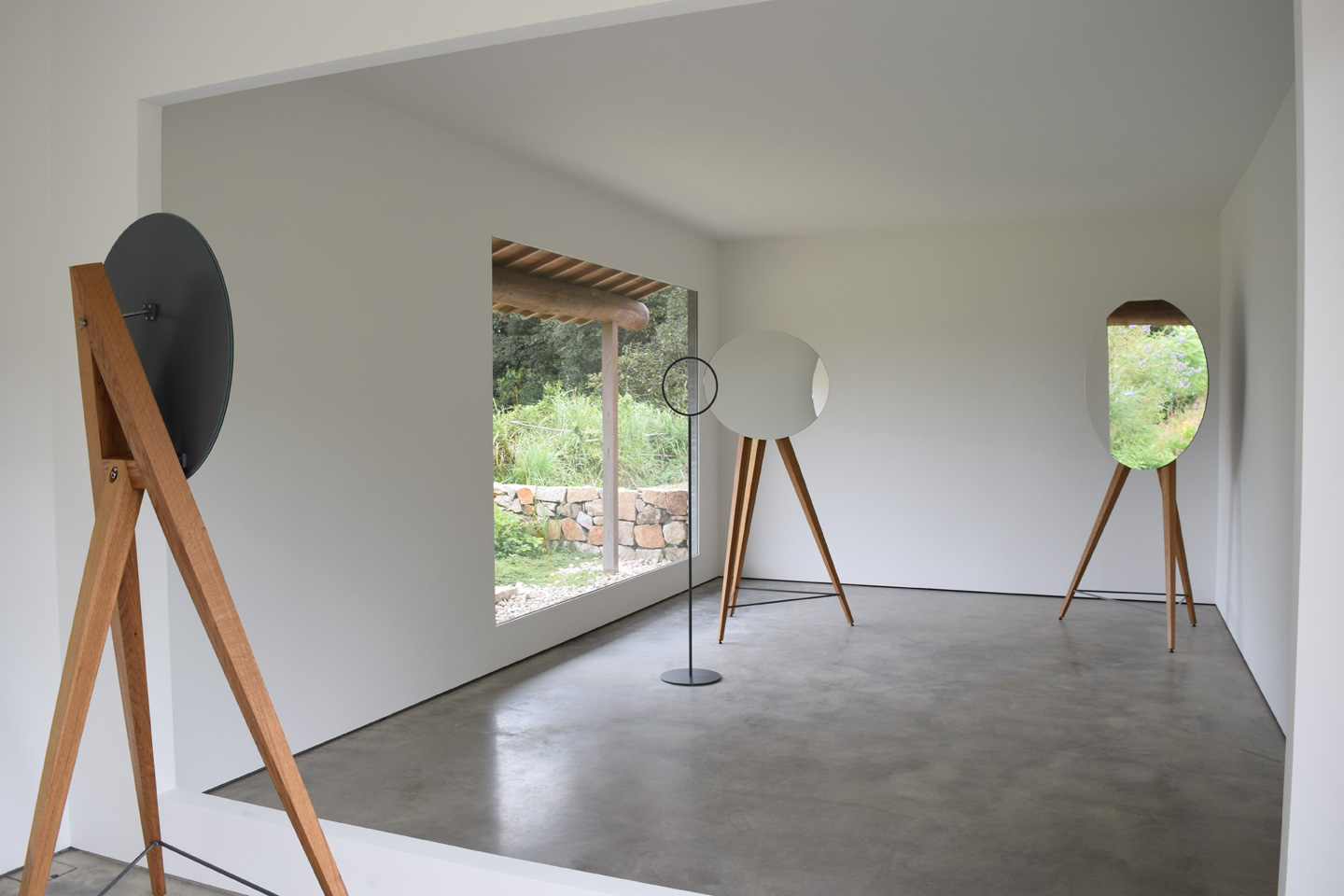
Self-loop, 2015
Wood, mirror, aluminium, stainless steel
Dimensions variable
Photo: Fukutake Foundation
Installation view at Art House Project, Inujima, 2016
© 2015 Olafur Eliasson
We interviewed the artist about the concepts underlying his work on the day of his visit to Inujima in September. We would like to share some of his words in this blog post.
Olafur Eliasson:
My work Self-loop is in a fantastic pavilion by Kazuyo Sejima. The building has a front room and a back room with a square frame in between. When I entered the space, I thought that the framed opening looks like a mirror, one which you can go through. So this pavilion is a nice place to put a work that works with mirrors.
I have placed three mirrors inside the space. At first, these mirrors appear to have been placed randomly. They are not perfectly centered, and don't follow the organization of the room. It just looks like there's a mirror in the corner, a mirror over here, a mirror over there--you don't see a system in the way they have been placed. But there is also a circular viewfinder that functions like a guide. It's a suggestion, a proposal. And it allows viewers to stand at the exact center of an infinite tunnel.
This work is about perspective and taking perspective. Making this work, I thought about the void of seeing, the void of perspective. I asked myself how we can see the seeing itself. I organized the mirrors with some humor, so that when you look into the mirror you see yourself from behind--looking into the mirror. It's bit like a traditional landscape painting, where you paint the viewer from the back looking at the landscape. Outside the room is a kind of soft garden, a landscape that mixes culturally and naturally organized elements. It's not a formal garden, it's a little bit romantic. I was intrigued by the fact that it is possible to arrange the mirrors so that you can see yourself looking out into the garden, because we have to learn to see our own perspective from outside. We have a first-person perspective, and we call that physical experience. We sense in the first-person, but we are also able to think about what we are sensing, and, more importantly, how--and maybe even why--we are sensing.
I think that "why" is a good question. It's our ability to reflect on our actions, on our reasons for doing what we are doing. We are capable of criticality. Is what I see actually real, or is it the seeing itself that creates what I see? Am I taking the world in, or, by seeing, am I projecting out onto the world? That's an interesting question. I believe that if we can take ownership of our own sensing, our sensing becomes productive instead of just being another kind of consumption. Moving through the space, noticing the ring, finding the tunnel are things that we do actively. It's not passive, like when we go to a store and allow ourselves to be influenced to buy something. Here we are a producer. The visitor to this house is a producer, a co-producer, an artist, a person who has the same responsibility as I do. There is something profoundly democratic in this idea, in the fact that nobody is more important than anybody else.
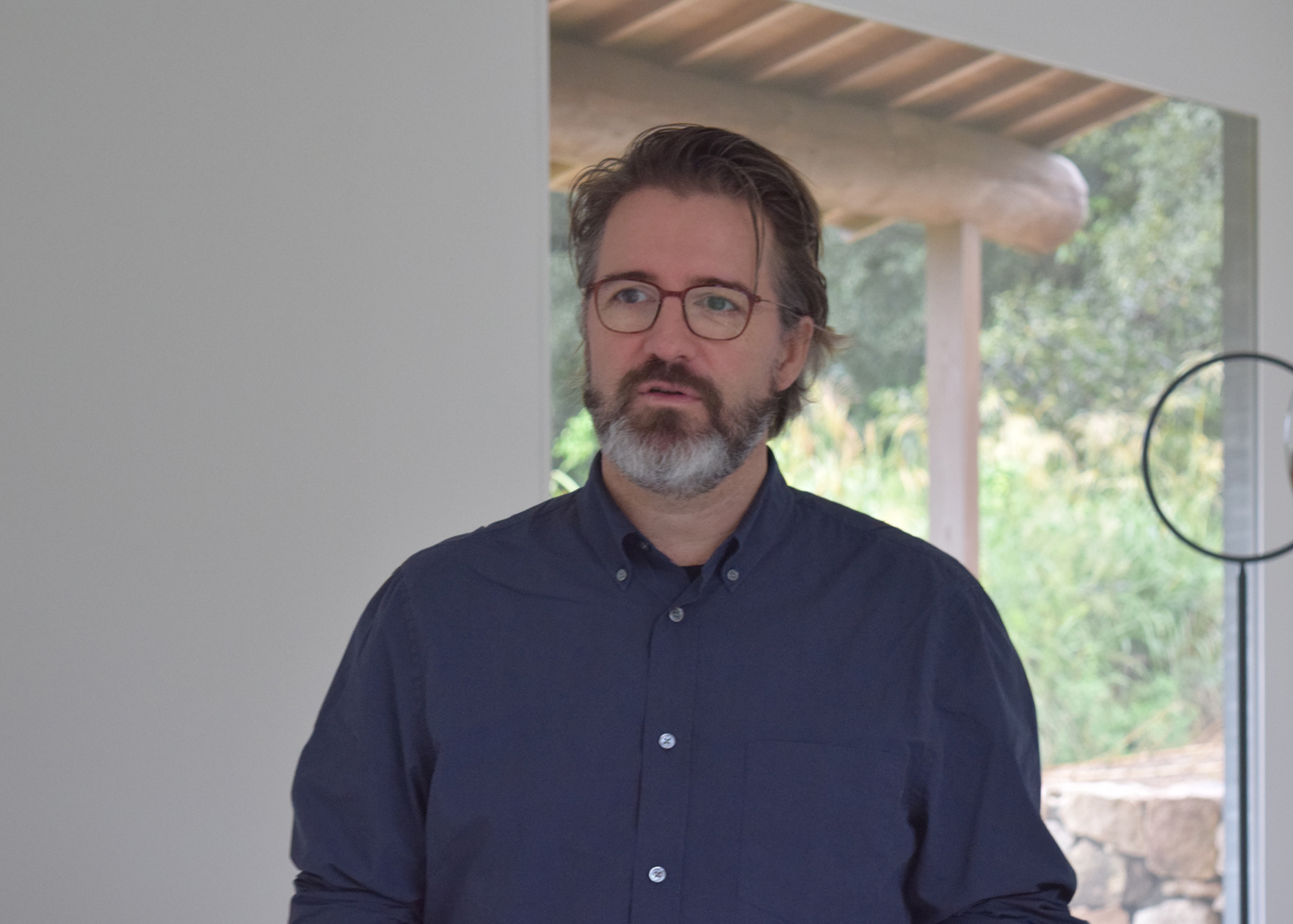
Photo: Fukutake Foundation
Olafur Eliasson's works have been exhibited around the world over the past decades. At the end of the interview, we asked him about his impressions of Inujima Island.
Olafur Eliasson:
Today it's raining and everything has a very dense atmosphere. When we come to the island we don't only see the island but also the environment, because the island reflects the environment. People might think that because the island is so remote it doesn't have much density, but this is a very dense island. I already saw an interesting fish, and the fish was very self-aware. I saw a bird, and the bird too seemed conscious of being a bird. These are small things, maybe not very crucial, but we can take with us the thought that the islands are dense and full of life.
It is also interesting that all these islands are marked by modern history, that they have traces of the last 100 or 200 years or maybe a little more. And now these traces are, let's say, retiring from the islands. It's exciting to see that other types of places and activities, such as this art project, are emerging to create a bigger perspective that's so unique, dense, and alive.

